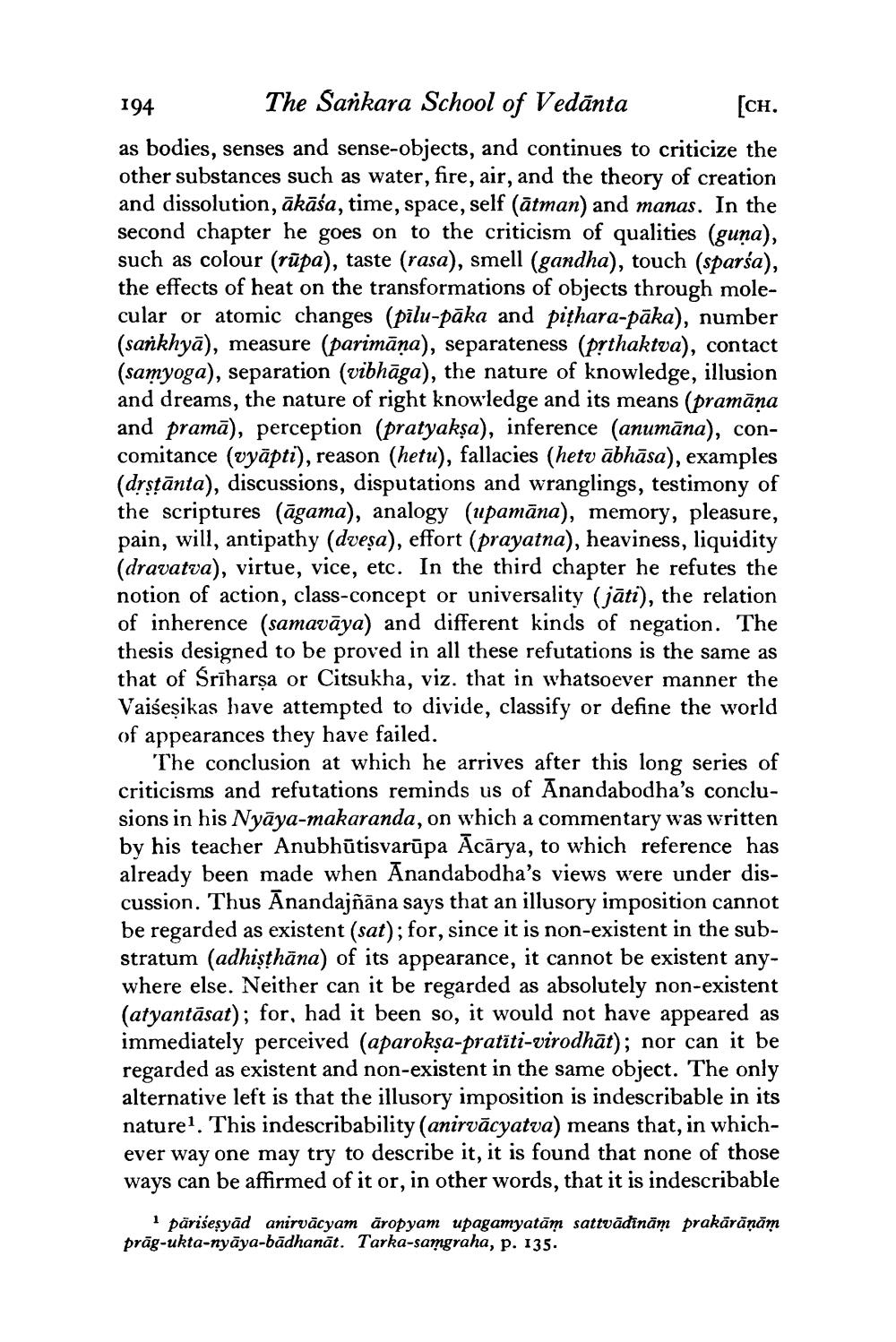________________
[CH.
194
The Sankara School of Vedānta as bodies, senses and sense-objects, and continues to criticize the other substances such as water, fire, air, and the theory of creation and dissolution, ākāśa, time, space, self (ātman) and manas. In the second chapter he goes on to the criticism of qualities (guna), such as colour (rūpa), taste (rasa), smell (gandha), touch (sparśa), the effects of heat on the transformations of objects through molecular or atomic changes (pilu-pāka and pithara-pāka), number (sankhyā), measure (parimāņa), separateness (prthaktva), contact (samyoga), separation (vibhāga), the nature of knowledge, illusion and dreams, the nature of right knowledge and its means (pramāņa and pramā), perception (pratyakşa), inference (anumāna), concomitance (vyāpti), reason (hetu), fallacies (hetv ābhāsa), examples (drsțānta), discussions, disputations and wranglings, testimony of the scriptures (āgama), analogy (upamāna), memory, pleasure, pain, will, antipathy (dveșa), effort (prayatna), heaviness, liquidity (dravatva), virtue, vice, etc. In the third chapter he refutes the notion of action, class-concept or universality (jāti), the relation of inherence (samavāya) and different kinds of negation. The thesis designed to be proved in all these refutations is the same as that of Sriharsa or Citsukha, viz. that in whatsoever manner the Vaiseșikas have attempted to divide, classify or define the world of appearances they have failed.
"The conclusion at which he arrives after this long series of criticisms and refutations reminds us of Anandabodha's conclusions in his Nyāya-makaranda, on which a commentary was written by his teacher Anubhūtisvarūpa Acārya, to which reference has already been made when Anandabodha's views were under discussion. Thus Anandajñāna says that an illusory imposition cannot be regarded as existent (sat); for, since it is non-existent in the substratum (adhisthāna) of its appearance, it cannot be existent anywhere else. Neither can it be regarded as absolutely non-existent (atyantāsat); for, had it been so, it would not have appeared as immediately perceived (aparoksa-pratīti-virodhāt); nor can it be regarded as existent and non-existent in the same object. The only alternative left is that the illusory imposition is indescribable in its naturel. This indescribability (anirvācyatva) means that, in whichever way one may try to describe it, it is found that none of those ways can be affirmed of it or, in other words, that it is indescribable
pāriseșyād anirvācyam āropyam upagamyatām sattvādinām prakārāņām prāg-ukta-nyāya-badhanāt. Tarka-samgraha, p. 135.




